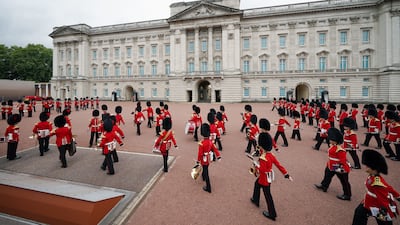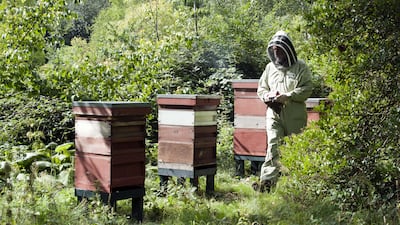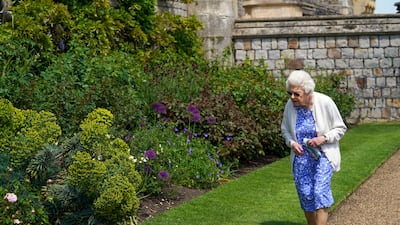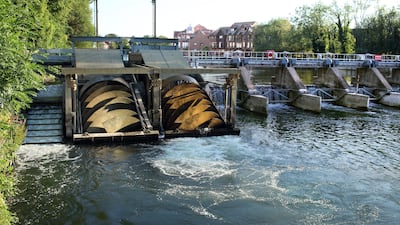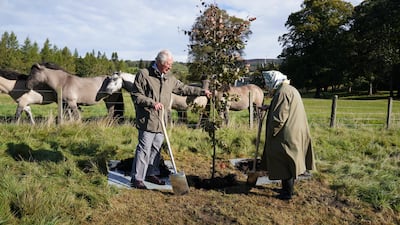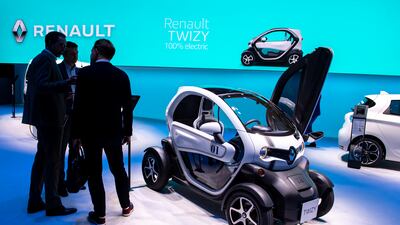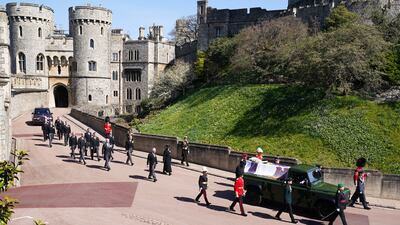When Queen Elizabeth II welcomed billionaire business leaders, presidential envoys and tech entrepreneurs to Windsor Castle this month, she took the opportunity to hammer home a message close to her heart: climate change must be combated.
She told the titans of industry gathered for a reception following a government investment summit that she was “proud” of how the UK is moving towards a sustainable future, but “there is still much more to do”.
The head of state, who has been resting after a short hospital stay following the event, also urged nations to “rise to the challenge” and avert the problems associated with climate change.
It is a challenge she has taken on herself.
She was schedued to attend Cop26 but pulled out amid continuing concerns for her health after doctor-ordered rest.
As well as adding her royal seal to the Cop26 summit in Glasgow, she has spearheaded eco-initiatives in her own life.
Her family are playing their part. From electric cars running on alternative fuel and international prizes for environmentally friendly initiatives, to pioneering hydro power systems or the simple approach of planting trees, they are taking a stand against climate change.
'Smart' Buckingham Palace
Behind the majestic gates of Buckingham Palace, the queen's official residence in London, a number of environmental initiatives have been pioneered over the last few decades.
It is a ‘smart’ palace, where computer systems monitor and control the heating, cooling and hot water supplied to the buildings.
Since 1994, the queen has been using a combined heat and power system at the palace to increase efficiency, helping to reduce the royal household's greenhouse gas emissions, energy costs and reliance on the National Grid.
Energy consumption is monitored through a network of over 60 smart meters installed across the estate, enabling areas for improvement to be identified and targeted.
The queen has even been employing a dedicated team of Green Champions since 2006 to develop and implement projects to reduce energy consumption within the household.
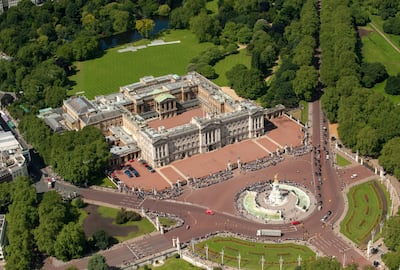
Their work is helping to shape a major 10-year £369 million ($508m) refurbishment, which is midway through at Buckingham Palace, that aims to improve the building’s energy efficiency by 40 per cent with the addition of solar panels and an anaerobic digestion unit to generate bio-gas from good and organic waste.
Outside, its gardens have not been forgotten, and now play home to four beehives and a wildlife scheme which has 320 different types of wildflowers and attracts more than 40 species of birds.
The Queen is currently trialling energy efficient LED lighting, which uses 86 per cent less electricity and has a longer lifespan, across the estate.
The waters of Windsor
At neighbouring Windsor Castle, where she spends much of her time and is the current venue of choice for marrying royals — Prince Harry and Meghan Markle were married within its grounds at St George's Chapel, as were Princess Eugenie and Jack Brooksbank — hydroelectricity is generated from the Romney Weir in the River Thames.
Two turbines generate electricity by harnessing the power of moving water, providing renewable energy and meeting 40 per cent of the castle's electricity requirements.
The scheme offsets approximately 600 tons of carbon dioxide every year.
Wild ways
The royals have been committed to preserving woodland and wildlife, and this year to celebrate the queen’s reign she has partnered with Woodland Trust in the Green Canopy initiative to donate more than three million free trees to schools and community groups across the country.
She hopes to create “a legacy in honour of her leadership of the nation, which will benefit future generations”, her official announcement said.
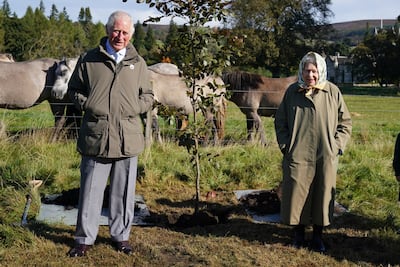
“Whether you are a seasoned gardener or a complete novice, we will guide you through the process of planting trees so that they survive and flourish for years to come,” it said.
It has been backed by Prime Minister Boris Johnson, who said trees “stand at the frontline of our fight against climate change”.
The royals have policies in place in Balmoral and Sandringham to ensure that the land is farmed sympathetically and that wildlife is encouraged to flourish.
All Balmoral, woodlands are certified by the Forest Stewardship Council which supports sustainable forestry worldwide and its farming practices are registered with the Soil Association, which promotes organic food and farming.
Sandringham produces organic vegetables and fruit on some of its arable farmland and meadows and plants over 5,000 trees and several miles of hedges each year.
Green machines
The family have been criticised about their carbon travel footprint when flying to events, but closer to home they are striving to make a difference with their fleet of electric cars, which include a Renault Twizy, a BMW i3 and a BMW hybrid 7-series.
It was in the 1970s that the late Duke of Edinburgh drove one of the first prototype electric vehicles and he had a London cab which ran on liquid petroleum gas.
When planning his funeral he requested that his final journey would be in his beloved converted electric green Land Rover.
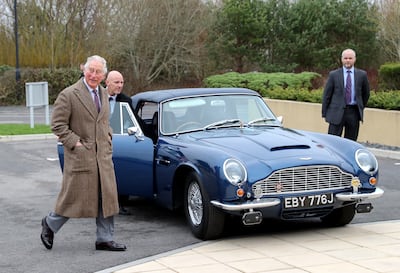
His son, Prince Charles, has long been following in his father’s footsteps in using green technology.
This month he revealed that his Aston Martin DB6 Volante, given to him on his 21st birthday in 1970, has been converted and now runs on disused wine and cheese.
“My old Aston Martin, which I’ve had for 51 years, runs on — can you believe this — surplus English white wine, and whey from the cheese process,” he told the BBC.
He also owns a £63,000 electric Jaguar I-Pace which he uses for his public engagements. He lent his son, Prince Harry, an electric 1968 Jaguar E-type, to leave his wedding reception.
A vocal campaigner on environmental issues, Prince Charles is involved with 69 eco-friendly charities — more than any other royal.
William follows his father
His son, Prince William, has launched his Earthshot Prize initiative to inspire “optimism, confidence and enthusiasm” in the next generation to find solutions to protect the Earth.
“We must inspire in the next generation … to chase those solutions and to continue building a more sustainable future,” he said.
“We know that young children already identify the climate as one of their biggest worries, and Generation Earthshot aims to educate and encourage them that together we can find the answers.

“Children can be uniquely creative and I can’t wait to see some of the ideas that are shared with us.”
It recognises ideas, innovations and solutions that combat climate change and help protect the environment. Each winner will receive £1m to develop their project.
Prince Harry champions climate change in the US
From his relocation to the US, Prince Harry is continuing his fight against climate change.
This month he launched a global campaign to halt drilling in Africa’s Okavango river basin and to urge oil drillers not to “pillage the ecosystem for potential profit”.
In September, the Duke and Duchess of Sussex attended the Global Citizen Live concert in New York to call for new laws to halve US emissions by 2030.
The couple were named environmental role models in July by UK charity Population Matters, following their decision not to have more than two children due to the environmental impact.
“I’ve always thought: this place is borrowed,” he told Vogue, speaking about his decision.
“And, surely, being as intelligent as we all are, or as evolved as we all are supposed to be, we should be able to leave something better behind for the next generation.”


